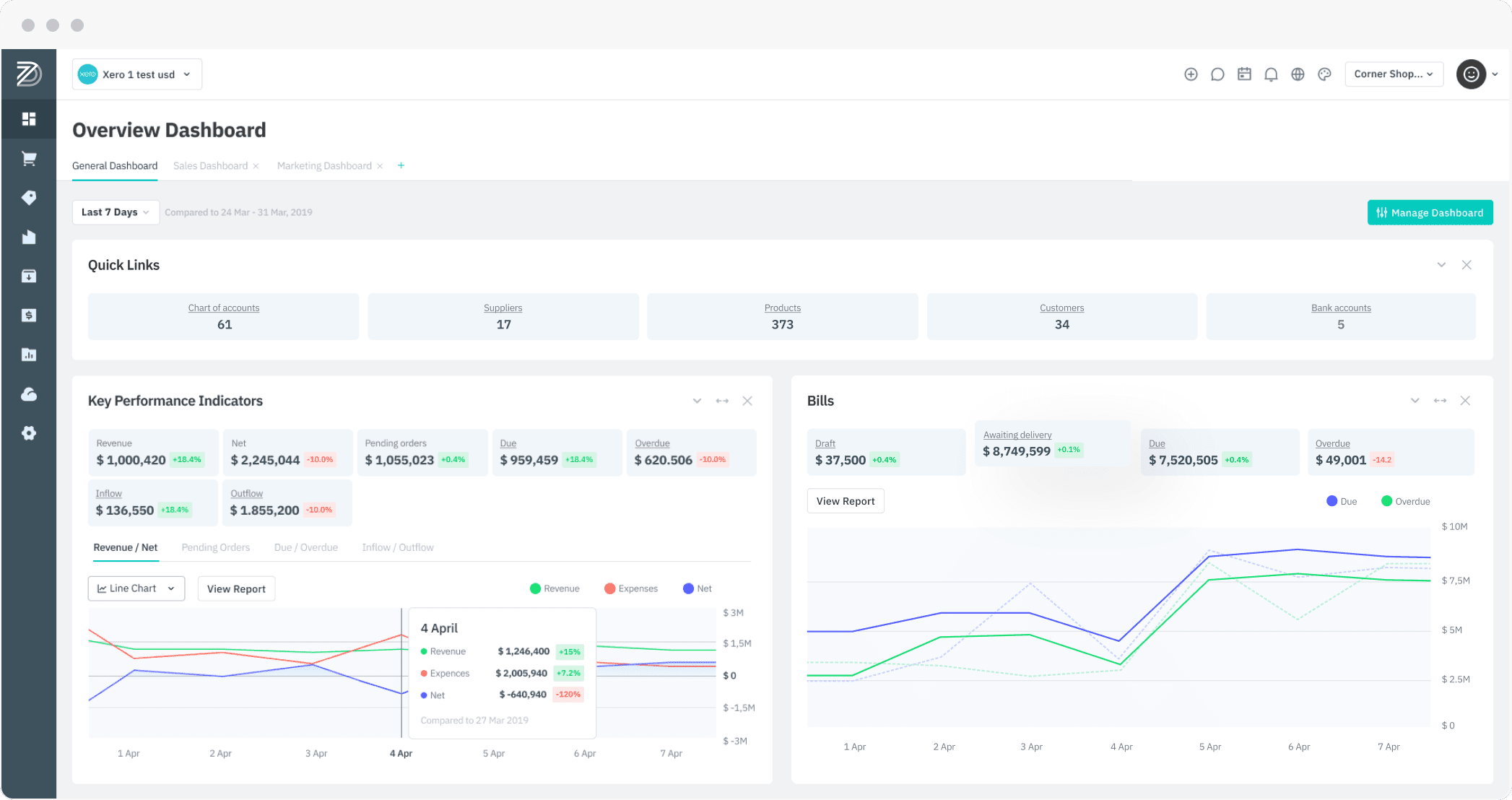If you’re running a business with high inventory requirements, it’s important to keep a close watch on your inventory value. Inventory value is the net total value of all the products that are currently a part of your inventory.
Tracking your inventory value can help you make the right business decisions and adjust your risk appetite. This becomes even more important when the world is going through strong dynamic shifts and disruptions, such as the one caused recently due to the global pandemic.
Hence, frequent and timely inventory tracking and revaluation is the key to running a successful product-based business.
What is inventory revaluation?
Inventory Revaluation is a process of adjusting the inventory costs to reflect the changes in the standard costs due to factors such as changes in the exchange rate, supply chain disruptions, mishaps during the transportation process, etc.

Inventory revaluation leads to greater accuracy and helps a company with their finances and taxation. It also plays an instrumental role in making key business decisions.
What is standard cost revaluation?
Standard cost revaluation is the process of updating the fixed standard cost of a product. It is done by taking into account the changes in the inventory costs and making adjustments in the standard costs accordingly.
What is NRV?
NRV (Net Realisable Value) is a metric that indicates the expected selling price of all the products in the inventory by factoring in the manufacturing and other miscellaneous costs. It may be higher or lower than the actual cost of the products.
NRV is a great way to predict potential losses and make adequate adjustments in the inventory valuation. This way, the company ensures that it doesn’t remain in the dark and all the losses are promptly taken into account while preparing the financial statements and balance sheets.
How Does Inventory Revaluation Affect Your Balance Sheets?
When you revalue your inventory costs, it directly impacts your financials and balance sheet.
If you’re a supplier of a key medical equipment or an essential product, the demand may have increased drastically due to the pandemic. Naturally, the current value of your inventory shoots through the roof.
On the other hand, if your inventory consists of a luxury product that is no longer in vogue, your inventory is no longer as valuable and is now making losses. These losses need to be accounted for, in the interest of accuracy.
In both these scenarios, calculating the NRV helps you determine the effect of the changed inventory value on your balance sheets.
The formula for calculating the NRV is as follows:
NRV = Market value of the product – Manufacturing and miscellaneous costs attached to the product
A positive NRV means that your inventory will earn you profits, while a negative NRV indicates that your product isn’t as valuable as the costs it incurs.
If you find that your NRV is negative, you have to create a separate entry on your income statement and classify it as a “loss on inventory.” Doing this will decrease your inventory and hence, your net income.
By doing this, your losses will all be accounted for and will be reflected in your financial statements and balance sheets, saving you from overstating your inventory.
What is an Inventory Reserve?
When you’re dealing with a large inventory that processes hundreds of orders a day, inventory misstatements are not exactly a rarity. To tackle this problem, many companies keep in place a reserve stockpile of products known as an inventory reserve.
The inventory reserve is used in case there are any projected losses due to a variety or reasons. Some of the common reasons include broken, stolen, expired or obsolete stock, supply chain breakdown, etc.
Whenever this happens, the stockpile from the reserve is used to mitigate the damage until the status quo is restored. This way, even though the balance sheet is updated by entering the changes made in the inventory and the reserve, the company suffers from minimal losses.
Why is Inventory Revaluation Necessary?
Here are some of the reasons why inventory revaluation is a critical aspect of running a product-based business and why you should get on it immediately:
Breakdown in the Supply Chain

If your inventory consists of products that are manufactured from multiple raw materials, the supply chain is vulnerable to breakdowns due to the unavailability of any of the raw materials. Hence, it’s always a good idea to have multiple sources for every ingredient.
However, nobody can escape Murphy’s law. Despite the best practices in place, there are instances when the supply chain comes to a jolting halt.
When this happens, you need to make the necessary changes to your inventory costs in order to ensure that your margins still hold. Inventory revaluation plays a key role in this.
Spoilage and Damage

When you’re churning out a number of products per day, there is bound to be some amount of spoilage and damage in your inventory. However, it also impacts your overall selling capacity since the damaged products cannot be sold anymore.
So what happens is that even if you’ve incurred the costs of producing these products, you’re unlikely to get anything back, and hence it will have to be adjusted from the profits acquired from the rest of the sales.
Periodic inventory revaluation helps you track these factors and adjust your rates accordingly, so that there are no surprises at the end of the year.
Fluctuating Demand
In a highly globalized, competitive world that we live in today, there is no space for complacency when it comes to predicting future demands. There have been cases where companies have had to declare bankruptcy due to high inventory levels and a sudden drop in demand.
In order to avoid this, it’s advisable to constantly carry out inventory revaluation. It helps companies run a lean inventory, as well as react to sudden market movements faster than their competitors.
Ace Your Inventory Management With DEAR Systems
Inventory management is one of the most important aspects of running an eCommerce business, or any product-based business for that matter. Choosing the right inventory management software can do wonders for your business, and show significant effects on your numbers.
The DEAR systems inventory management systems fully loaded with features like:
- Real time stock monitoring and avoiding shortages
- Seamless integration across multiple sales channels
- Easy updation of product listings
- Highly automated Pick, Pack and Ship processes
- Real-time Warehouse Management across multiple warehouses
With a sharp focus on versatility and user-friendliness, the inventory management software from DEAR systems will be your biggest ally in running a supremely efficient inventory.







